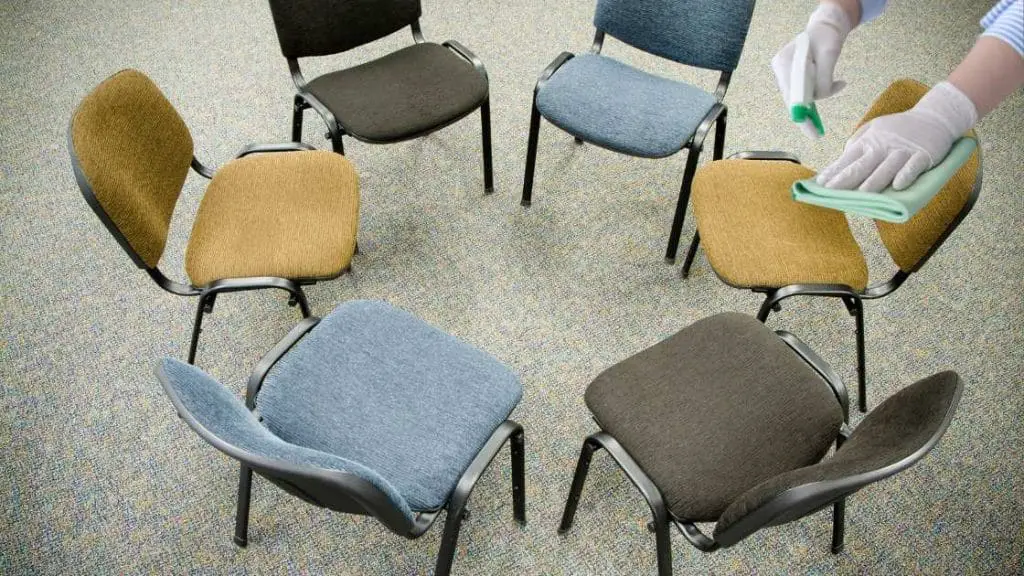To clean dining table chairs, begin by vacuuming or brushing off loose crumbs and dust. Then, wipe down the surfaces with a mixture of mild soap and water, and dry thoroughly.
Maintaining the cleanliness of your dining table chairs is essential, not just for preserving their lifespan but also for fostering a hygienic dining environment. How to Clean Dining Table Chairs?
Undertaking regular upkeep is key to thwarting the accumulation of dirt and stains, ensuring a simpler and more effective cleaning process in the long run.
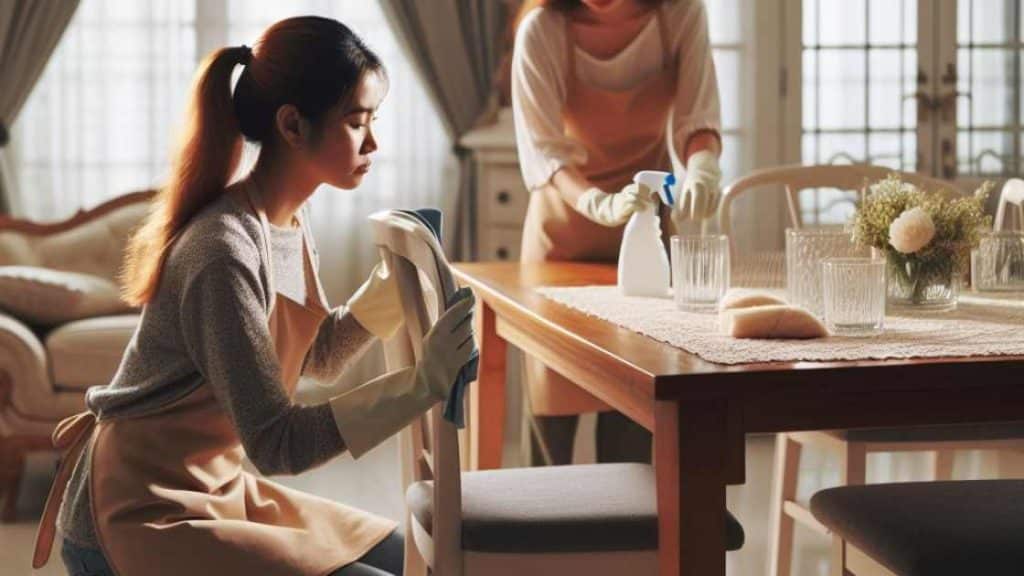
Whether your chairs are wood, metal, or upholstered, a simple cleaning routine can make a significant difference in the overall appearance of your dining room.
The key is to use the right cleaning materials for each type of chair material and to promptly address spills and stains.
A clean dining set can make mealtimes more enjoyable, and when done correctly, can preserve the beauty and functionality of your chairs for years to come.
Introduction To Furniture Care
Your dining room is the heart of family gatherings. Maintaining your dining chairs not only keeps them looking fresh but also extends their lifespan.
In this guide, we dive into the simple yet effective ways to care for your furniture, ensuring those dinner parties remain stylish and hygienic.
Clean Up, Stay Healthy
Regular maintenance of dining chairs is essential. It prevents the buildup of dirt and bacteria, which can cause deterioration and a less inviting dining environment. A cleaner dining area promotes a healthy space for your family and guests.

Overview Of Different Types Of Dining Chairs
| Type of Chair | Material | Common Cleaning Method |
|---|---|---|
| Wooden | Wood | Dusting and occasional polishing |
| Upholstered | Fabric | Vacuuming and stain removal |
| Metal | Metal, Industrial | Wiping with a damp cloth |
| Plastic | Synthetic materials | Soap and water cleaning |
| Leather | Leather, Faux leather | Specialized cleaner and conditioning |
Dining chairs come in varied forms, each requiring specific care techniques. From classic wooden to modern metal, knowing your chair type is the first step to effective cleaning. Check the manufacturer’s guidelines for best practices tailored to your chair’s material.
Preparing For The Cleaning Process

When preparing to clean dining table chairs, the right approach sets the stage for success. Proper preparation ensures effective cleaning and maintains the integrity of your furniture. As you gear up for this task, meticulous preparation will make the difference.
Gathering Necessary Cleaning Supplies
Before diving into the cleaning process, assembling the right tools and cleaners is a must. Here’s a checklist to help you:
- Soft-bristled brush or dusting cloth for loose dirt
- Mild detergent for most materials
- Wood cleaner for wooden chairs
- Upholstery cleaner for fabric seats
- Leather conditioner for leather chairs
- Microfiber towels to avoid scratches
- Bucket for mixing cleaning solutions
- Vacuum cleaner with attachments for crevices
Initial Steps: Dusting And Surface Preparation
Begin with removing loose dust and debris. A gentle wipe or vacuum can effectively lift dry dirt from the surface. Pay attention to nooks and crannies where crumbs might hide.
- Use the soft-bristled brush or cloth to dislodge surface dust.
- Attach the crevice tool to your vacuum and clear out deeper dirt.
- Make sure the surface is completely dry after the initial cleaning.
- If stains are present, gently spot-treat them with the appropriate cleaner for the material.
These initial steps prime chairs for a thorough clean, ensuring the best results from your efforts.
Cleaning Wooden Chairs
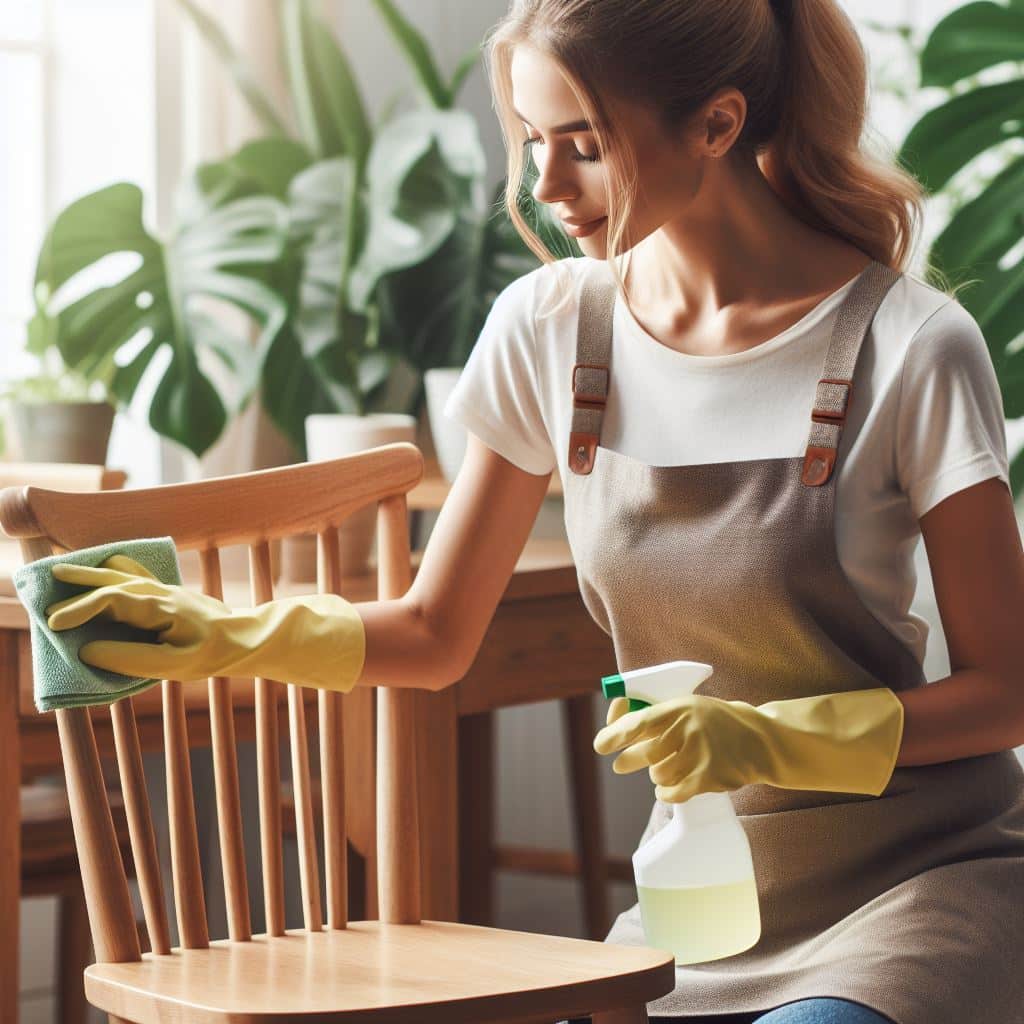
Cleaning wooden dining chairs keeps them looking great and preserves their life. Wood demands special care. Grime builds up over time.
It’s vital to choose the right products. Regular cleaning keeps chairs in tip-top shape. It’s a task worth doing right.
Choosing The Right Cleaning Products For Wood
Selecting the proper cleaners is vital for wooden chairs. Not all cleaners are safe for wood. It’s best to avoid harsh chemicals. They can damage wood surfaces and finishes.
- Opt for gentle soaps or wood-specific products.
- Consider natural solutions like vinegar mixed with water.
- Look for ph-neutral cleaners to maintain the integrity of the wood.
Step-by-step Guide To Cleaning And Polishing
- Remove dust with a soft, dry cloth.
- Mix a cleaning solution suited for wood.
- Wipe down the chairs with a damp, not wet, cloth.
- Dry the chairs thoroughly with a clean cloth.
- Apply furniture polish with a soft rag in circular motions.
- Buff the chairs to a shine, following the wood grain.
Addressing Scratches And Water Marks
Scratches and watermarks can ruin a chair’s appearance. Fixing them keeps chairs like new. Here’s a simple solution:
| Type of Mark | Solution |
|---|---|
| Scratches | Use a walnut to rub into the scratch; then polish. |
| Water Marks | Apply a paste of salt and olive oil; let sit, then wipe off. |
Cleaning Upholstered Chairs

Upholstered dining chairs add a touch of comfort and elegance to any dining space. Regular cleaning keeps them looking fresh and new. Learn some simple yet effective tips to clean these cozy seats.
Vacuuming And Spot Cleaning Basics
Maintaining the fabric of upholstered chairs is easy with the right approach. Start with vacuuming to remove dust and crumbs.
- Attach a soft brush to your vacuum cleaner.
- Gently run it over all surfaces of the chair.
- Focus on seams and crevices where dirt accumulates.
For spots and spills, swift action is key. Use a clean, damp cloth to blot stains. Never rub as this can work the stain deeper into the fibers.
Deep Cleaning Techniques For Fabric Upholstery
For a thorough refresh, deep cleaning is necessary.
- Check the manufacturer’s label for cleaning instructions.
- Use appropriate upholstery cleaner for the fabric type.
- Apply cleaner to a small, inconspicuous area first to test.
- Using a soft brush, work the cleaner into the fabric.
- Rinse with a clean cloth dampened with water.
Drying And Preventing Future Stains
Proper drying preserves the integrity of the upholstery.
- After cleaning, allow the fabric to air dry completely.
- Avoid direct heat sources which can damage the material.
- To prevent future stains, consider using a fabric protector.
- Follow the manufacturer’s instructions for application.
Cleaning Metal Chairs

Welcome to the ultimate guide on keeping your dining space spick and span. Cleaning metal chairs can be a breeze with the right techniques.
Whether it’s the everyday dust or the stubborn rust, this post has got you covered. Let’s dive in and get those metal chairs shining!
Removing Rust
Start with rust removal to revive your metal chairs. Follow these simple steps:
- Inspect the chair for any rust spots.
- Use a wire brush to scrub off loose rust.
- Apply a mixture of vinegar and baking soda on the affected areas.
- Wait for the solution to fizz and break down the rust.
- Wipe clean with a cloth soaked in soapy water.
- Rinse the chair thoroughly and dry with a soft towel.
Polishing Metal Surfaces
Metal surfaces need to shine! Polish chairs with these steps:
- Choose a non-abrasive metal polish.
- Apply polish with a soft cloth in circular motions.
- Rub gently until the surface is reflective.
- Buff off any excess polish with a clean, dry cloth.
Protective Coatings And Maintenance Tips
Keep that glow with protective coatings and regular upkeep:
| Method | Description | Frequency |
|---|---|---|
| Clear Lacquer | Apply a thin coat for extra protection. | Every 6 months |
| Waxing | Use car wax to add a protective layer. | Every 3 months |
| Cleaning | Regular dusting with a dry cloth. | Weekly |
Simple maintenance includes:
- Keeping chairs dry to avoid rust.
- Using coasters to prevent water stains.
- Placing chairs away from direct sunlight.
Cleaning Plastic Chairs
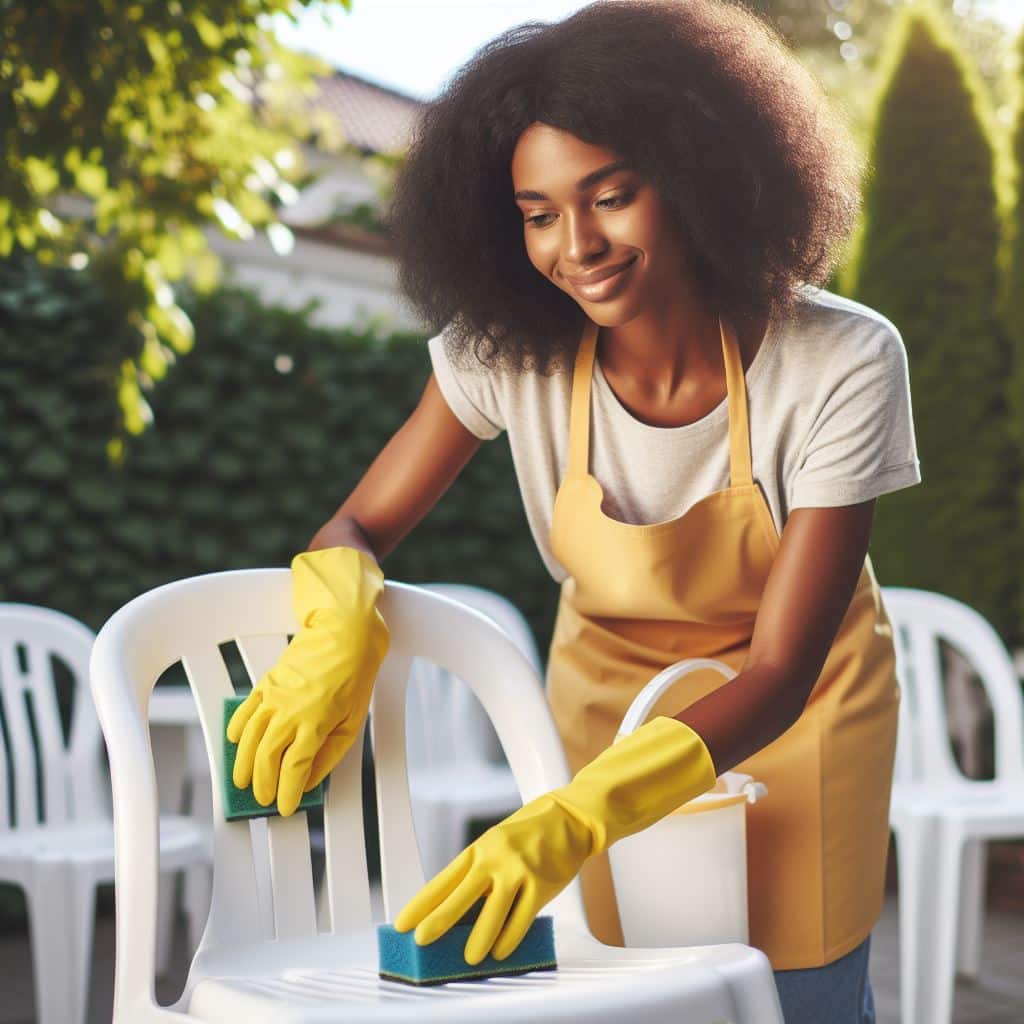
Cleaning plastic chairs can be simple with the right approach. Unlike other types of furniture, plastic chairs require specific cleaning methods. Marks, stains, and dirt show up easily and can make even the most stylish chairs look unsightly.
Effective Products For Plastics And Synthetics
Utilizing the correct cleaning products remains pivotal for the upkeep of plastic chairs. Keep these chairs looking fresh and clean with a few key products:
- Mild dish soap – A gentle yet effective cleaner for most dirt and grime.
- Vinegar solution – Mix water and white vinegar for a homemade cleaner.
- Baking soda – Useful for tough stains when mixed with water into a paste.
- Rubbing alcohol – Great for sanitizing and removing sticky residues.
- Specialty plastic cleaner – For deep cleaning or restoring shine to dull surfaces.
Dealing With Discoloration And Scuff Marks
Discoloration and scuff marks are common issues with plastic chairs. These steps ensure that chairs maintain their color and finish:
- Clean regularly – Prevents buildup of dirt that can cause discoloration.
- Soft cloth application – Use a soft cloth to apply cleaners, avoiding scratches.
- Non-abrasive scrubbers – Opt for non-abrasive pads for scuff marks to avoid damage.
- Magic eraser – Mildly abrasive, it can work wonders on difficult scuffs.
- UV-protectant spray – Protects chairs from sun-induced fading.
Dealing With Leather And Faux Leather Chairs
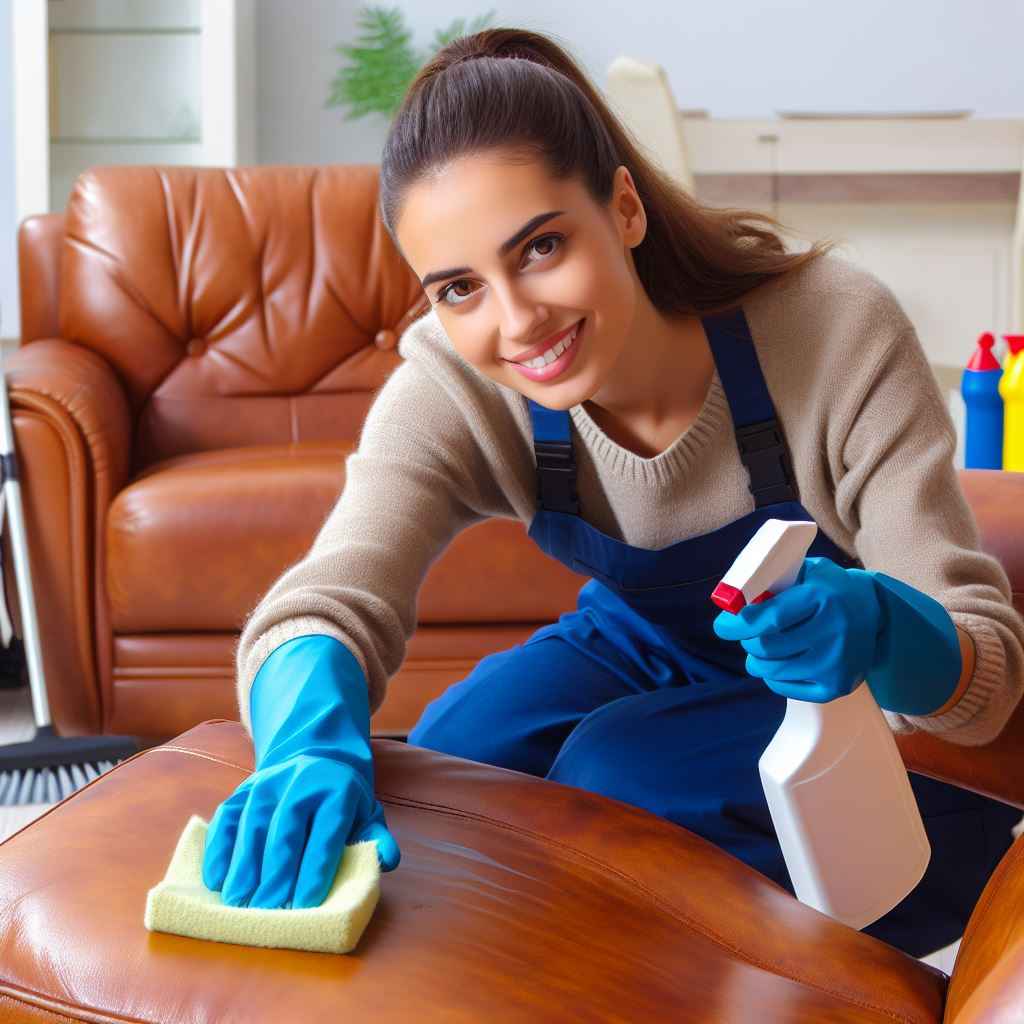
Leather and faux leather dining chairs add a touch of elegance to any home. Yet, maintaining their pristine condition demands specific care. Learn to clean and protect your valued chairs effectively.
Cleaning And Conditioning Leather
Leather chairs need gentle, regular cleaning. Follow these steps:
- Dust the surface. Use a soft cloth to avoid scratches.
- Prepare a mild soap solution. Mix warm water with soap.
- Wipe the leather. Use a soft, damp cloth. Do not soak the leather.
- Dry with a clean cloth. Ensure no water remains.
After cleaning, leather requires conditioning:
- Apply a quality leather conditioner.
- Buff gently. Use a soft cloth to promote absorption.
- Recondition every 6-12 months. This keeps the leather soft.
Best Practices For Preserving Faux Leather
Faux leather demands its unique care routine:
- Clean spills immediately. Pat with a soft cloth.
- Avoid harsh cleaners. They can damage faux leather.
- Use specific faux leather cleaner. Spray lightly and wipe.
To extend your faux leather’s life:
- Keep away from direct sunlight. Prevents fading and cracking.
- Moisturize the surface. Use faux leather conditioner regularly.
Natural Materials: Cane, Wicker, And Rattan Chairs
Chairs made of cane, wicker, and rattan add a touch of elegance and comfort to any dining area. These natural materials bring warmth and an organic feel into a room. But to keep them looking their best, specific care is essential.
Without proper maintenance, these delicate weaves can collect dust, and grime, and eventually become damaged. Follow these easy steps to ensure your cane, wicker, and rattan chairs stay clean and intact for years to come.
Gentle Cleaning Solutions For Natural Weaves
When cleaning natural weave chairs, gentle is the way to go. Here’s a simple cleaning mix:
- Combine warm water with a few drops of mild dish soap.
- Use a soft-bristled brush to lightly apply the solution.
- Focus on crevices where dust accumulates.
- Rinse with a damp cloth and dry immediately to prevent moisture damage.
For stubborn spots, a small amount of white vinegar can help. Apply sparingly and never soak the material.
Maintaining Shape And Preventing Unraveling
Maintaining your chairs’ natural shape and weave integrity is important.
Here are practical tips:
- Do not sit on damp chairs; wait until they are fully dry.
- Avoid leaning back on two legs, which can stress the weave.
To prevent unraveling:
- Regularly check for loose ends or snags.
- Tuck or trim stray fibers with scissors.
- Treat your chairs gently to preserve their structure.
Immediate attention to any damages can save your chairs from needing extensive repairs.
Maintenance And Protective Measures
Caring for your dining table chairs keeps them looking great and extends their life. Think of it as a health regimen for furniture.
Just like good habits keep you in top condition, regular upkeep and protective measures for chairs ensure they remain sturdy and inviting for every meal.
Regular Maintenance Schedule For Dining Chairs
Setting up a routine is key. Here’s how:
- Weekly: Wipe surfaces with a gentle cleanser. Avoid harsh chemicals.
- Monthly: Check all screws and fastenings. Tighten as needed.
- Seasonally: Inspect for wear. Address any small issues promptly.
Spills? Clean them quickly. Use a soft cloth and water. Keep chairs dry to avoid damage.
Applying Protectants To Guard Against Wear And Tear
Protectants add a layer of defense. Here’s how to apply:
- Select the right product for your chair’s material.
- Test it on a small, hidden area first.
- Use as directed, usually with a soft cloth in a circular motion.
- Reapply regularly, based on manufacturer recommendations.
For wood chairs, consider furniture polish. For upholstery, a fabric protector works well. Leather chairs benefit from a quality leather conditioner. Always follow label instructions closely.
Safety And Environmental Considerations
Safety and Environmental Considerations should be top of mind when cleaning your dining table chairs. Keeping your family and the planet healthy involves choosing non-toxic cleaning solutions and proper waste disposal methods.
This guide helps you to understand how to maintain cleanliness without harming your surroundings.
Choosing Eco-friendly And Safe Cleaning Agents
Selecting the right cleaning agents is crucial for ensuring safety and sustainability. Look for products labeled biodegradable, non-toxic, and eco-friendly. These products are gentle on the environment and safe for your family. Consider using natural ingredients like vinegar and baking soda, known for their effectiveness and minimal impact on the environment.
- Vinegar: Cuts through grease and eliminates odors
- Baking Soda: Great for scrubbing and removing tough stains
- Lemon Juice: Natural bleaching agent that leaves a fresh scent
Proper Disposal Of Cleaning Wastes
After cleaning your chairs, it’s essential to dispose of any waste responsibly. Avoid pouring leftover cleaning mixtures down the drain. It can harm water ecosystems. Instead, follow these steps:
- Use all the mixture, or store it for future use.
- If disposal is necessary, find out if your community offers a hazardous waste program.
- For natural ingredients, composting could be a viable option.
By being mindful of the products you use and their disposal, you contribute to a safer and cleaner environment.
The Long-term Benefits Of Clean Chairs
Keeping dining table chairs clean not only makes mealtime more enjoyable but also brings long-term rewards. Discover how tidy chairs can elevate both the look and lifespan of your furniture.
Aesthetics And Comfort: The Payoff Of Regular Cleaning
Regularly cleaned chairs transform dining spaces. They shine, inviting guests to sit and stay awhile. Chairs free of crumbs and spills are not only more pleasing to the eye, but they also offer greater comfort. Clean fabric maintains softness and elasticity, making longer dinners more enjoyable. Wipe surfaces, vacuum crevices, and condition materials often for a welcoming dining experience.
| Task | Frequency | Benefit |
|---|---|---|
| Surface Wiping | Daily | Stain Prevention |
| Vacuuming | Weekly | Dust & Crumb Removal |
| Deep Clean | Monthly | Fabric Care |
Adding Years To Your Furniture Through Proper Care
Clean chairs don’t only look better; they last longer. Dirt and grime wear down materials over time. By implementing a cleaning routine, fabrics remain intact and frames stay sturdy. Safeguard your investment through regular maintenance. This practice delays the need for costly replacements and repairs. Follow these guidelines to add years to your furniture’s life:
- Use mild cleaners that won’t harm the finish.
- Avoid soaking wooden parts to prevent warping.
- Attend to spills immediately to prevent permanent stains.
- Polish metal components to protect against rust.
- Check screws and joints during cleaning to ensure stability.
Consistent upkeep rewards you with long-lasting furniture that continues to bring beauty and function to dining gatherings. Keep these tips in mind and your dining chairs will not only sparkle but stand the test of time. Clean well, and enjoy the lasting benefits.
Frequently Asked Questions For How To Clean Dining Table Chairs
How Do You Deep Clean Fabric Dining Chairs?
Fabric dining chairs can be deep cleaned by vacuuming first, then using a mixture of mild detergent and warm water to treat stains. Gently blot the affected areas, avoiding circular motions which can worsen the stain. Let it air dry or use a hairdryer on a cool setting.
Can You Steam Clean Wooden Dining Chairs?
Wooden dining chairs should not be steam cleaned as the moisture can damage the wood. Instead, wipe them down with a soft cloth slightly dampened with a wood-safe cleaner. Follow up by buffing the wood with a dry cloth to remove any residue and restore shine.
What’s The Best Way To Disinfect Dining Chairs?
To disinfect dining chairs, use a disinfectant spray or make a solution of half a cup of white vinegar to a gallon of water. Spray or wipe the solution onto the chairs, focusing on high-touch areas. Rinse with a clean damp cloth if necessary and dry thoroughly.
How Often Should I Clean My Leather Dining Chairs?
Leather dining chairs should be cleaned every few months or more frequently if used daily. Wipe them with a damp cloth using a gentle soap solution. Apply a leather conditioner after cleaning to keep the leather supple and prevent cracks.
How do I clean fabric dining chairs?
Begin the process of cleaning fabric dining chairs by first vacuuming away any loose dirt or debris. Next, create a mixture of mild detergent and water, delicately scrub the fabric using a soft brush, and conclude by blotting the surface with a clean, damp cloth to eliminate stains and residue.
Conclusion
Starting on a chair cleaning journey transforms your dining area with minimal effort. Armed with these tips, you’ll maintain spotless seating easily. Remember, regular care wards off stubborn stains. For sparkling results, improve this simple routine. And when guests arrive, they’ll notice — and appreciate — the difference.

